Browse the most-read 23 critical topics in chemistry for Q3 2020, including research, reviews, perspectives, and editorial pieces.

ACS Publications regularly produces collections of the most important chemistry research topics. These Virtual Collections of the most important chemistry research topics bring together the most important ideas in the field in a variety of ways, including Special Issues and ACS Selects from across the portfolio journals. These collections reflect the most important chemistry research topics of current scientific interest and are designed for experienced investigators and educators alike.
Browse 23 of the most important, engaging topics in chemistry with Virtual Collections released by ACS Publications journals in Q3 2020:

In this new Virtual Issue, ACS Sensors celebrates a cohort of early-stage investigators advancing the field of sensor science. Developments on high-performance sensors for infectious disease diagnosis, in vivo monitoring, intracellular sensing, and gas detection are just some examples of the exciting research featured in the 25 articles selected for this collection. The Rising Stars in this Virtual Issue provide tremendous promise to our field, and we wish them continued success as they launch their careers.
***
Frontiers in Research: NanoEngineering and Chemical Engineering at UC San Diego
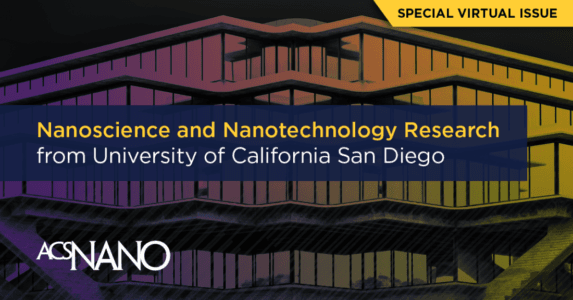
This Virtual Issue of ACS Nano highlights contributions of the faculty and students of the Department of NanoEngineering and Chemical Engineering Program at the University of California, San Diego. The research interests of the department are highly interdisciplinary—it is known internationally for its strengths in nanomedicine, flexible electronics, and energy storage. A particular strength of the department that cuts across all research areas is computational materials science.
***
Perovskite Photocatalysis
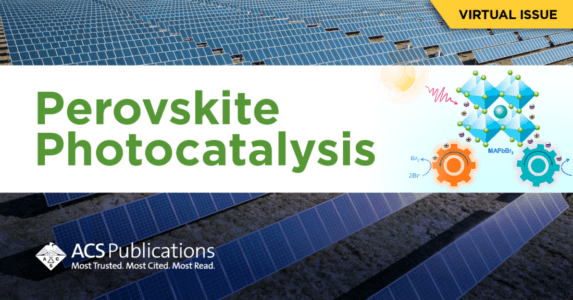
The ease of preparation and bandgap tunability of metal halide perovskites makes them important candidates for photocatalytic applications. This virtual issue highlights some early efforts to employ perovskite nanostructures in photocatalysis, published in ACS Energy Letters, ACS Applied Materials and Interfaces, Journal of the American Chemical Society, ACS Applied Energy Materials, and The Journal of Physical Chemistry Letters.
***
Excellence in Medicinal Chemistry Research from Japan
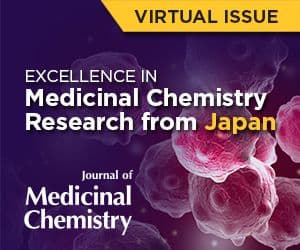
Japan has a long-standing tradition of world-class innovation and the discovery of new medicines for human diseases. This Journal of Medicinal Chemistry Virtual Issue features 15 articles published during 2017-2019 to showcase outstanding medicinal chemistry research from Japan and includes contributions from the pharmaceutical/biotech industry and academic/government institutions. The therapeutic areas of focus in these publications include cancers, neurological conditions, infectious diseases, heart failure, diabetes, inflammation, among others.
Taming the Nanoscale with Ultrafast Nano-Plasmons
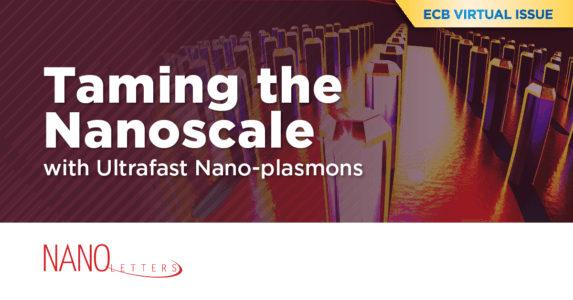
Surface plasmons are collective oscillations of a material free electron gas at its interface, leading to strongly enhanced electromagnetic field confinement below the diffraction limit of light. These excitations display fast dynamics lasting few tens of femtoseconds and can lead to a strong nonlinear optical response at the nanoscale. Thus, they represent the perfect tool to efficiently drive and control fast optical processes, like ultrafast optical switching or single-photon absorption/emission. This Virtual Issue focuses on important papers published in Nano Letters in the last decade reporting studies on the ultrafast dynamics of surface plasmons.
Two-Dimensional Layered Materials Offer Expanded Applications in Flatland
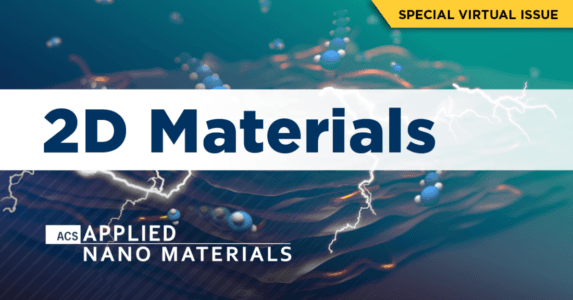
Van der Waals layered materials are formed by stacks of ultrathin layers connected by weak van der Waals forces. Each layer has a complete chemical structure without dangling bonds, which makes each individual layer relatively stable. With the isolation of a single atomic layer from graphite (called graphene) and the discovery of its exotic physical properties, a new era in two-dimensional materials began. Ever since, a wide variety of 2D materials have been synthesized and studied including inorganic, organic, and hybrid compounds. Additionally, high-throughput calculations have identified more than 1,800 compounds that are potentially exfoliable down to few-atom thin layers. In just a decade, 2D materials have expanded into a vast range of applications in diverse areas of technology such as optoelectronics, spintronics, catalysis, energy harvesting and storage, ion transport, and biomedicine. In light of various new development in the field of 2D materials, it is our pleasure to announce a “virtual issue” on two-dimensional layered materials and their applications for ACS Applied Nano Materials.
Combustion Chemistry

Combustion is an important area of research in physical chemistry because of its underlying gas phase uni- and bi-molecular reactions, often involving free radicals and other highly reactive intermediates, and the associated collisional energy transfer. Recent advances in both experimental techniques and theoretical algorithms have greatly improved our understanding of combustion chemistry. In this Virtual Issue, a collection of recent manuscripts published in The Journal of Physical Chemistry A/B/C and The Journal of Physical Chemistry Letters relevant to various aspects of combustion chemistry are presented along with an editorial.
Time-Resolved Microscopy: A New Frontier in Physical Chemistry
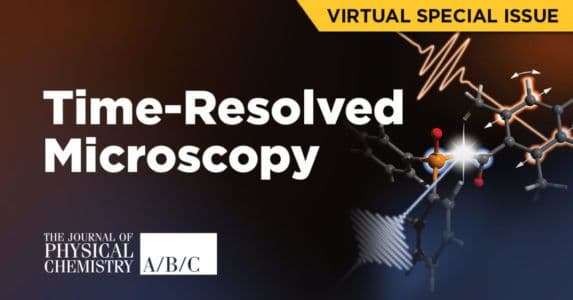
A universal feature of complex materials and biological systems is that the interactions between different functional components span multiple time and length scales. Furthermore, these interactions are often governed by nonequilibrium states. To gain a fundamental understanding of these multiscale interactions, new experimental approaches combining spatial and temporal resolutions are necessary, which requires a fundamental shift from conventional spectroscopy and microscopy methods. This Virtual Special Issue on Time-Resolved Microscopy focuses on the recent developments of such new experimental approaches.
JACS Young Investigators 2020
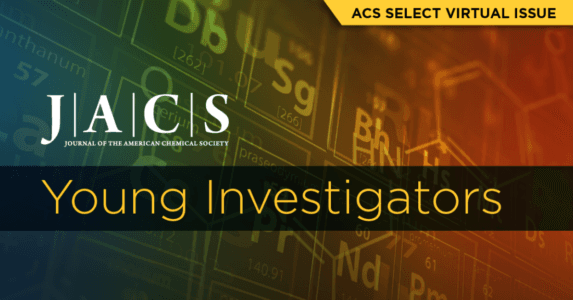
We are excited and pleased to provide an ACS Select virtual issue based upon the outstanding work of young investigators published in 2019 in the Journal of the American Chemical Society. This collection of Articles and Communications highlights premier research in diverse topical areas from around the world that is of broad interest to the contemporary readership of JACS. These carefully selected publications were chosen by the appropriate, knowledgeable JACS Editors on the basis of reviewer input and editorial evaluation.
Key Resources for Medicinal Chemists
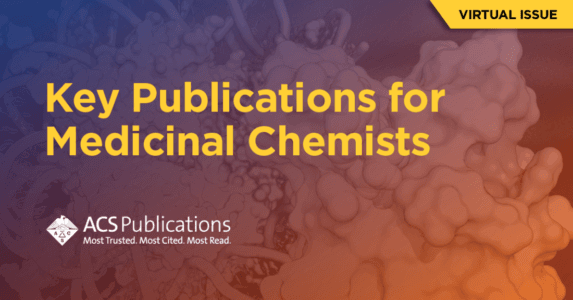
The ACS Medicinal Chemistry Letters Early Career Board is celebrating the journal’s 10-year anniversary with a collection of articles in the new Virtual Issue “Key Resources for Medicinal Chemists.” The issue also includes articles from Journal of Medicinal Chemistry, ACS Chemical Neuroscience, ACS Chemical Biology, ACS Infectious Diseases, and Chemical Reviews to illustrate journal collaborations that have shaped the path of ACS Medicinal Chemistry Letters over the past 10 years. We hope our readers enjoy this resource and that it may inspire current and future scientists to explore the exciting field of medicinal chemistry!
Atmospheric Chemistry

Research exploring the chemistry of the Earth’s atmosphere addresses both the natural processes that occur and the impact that human activity is having on atmospheric composition, air quality, and climate. The Journal of Physical Chemistry A and ACS Earth and Space Chemistry provide platforms with wide reach for the dissemination of research in all areas of atmospheric chemistry. This joint Virtual Issue highlights examples of articles published since 2017 that examine many facets of atmospheric chemistry using techniques ranging from laboratory measurements and computational studies of reaction pathways to the origins and properties of atmospheric aerosols, and to field measurements of atmospheric composition.
Enhancing Technological Applications through DFT Modeling of Nanomaterials

The practical foundation of modern density functional theory (DFT) was established in the Hohenberg-Kohn theorems more than 50 years ago. The theory is based on first principles and allows material property predictions without requiring any prior knowledge or the ability to synthesize the material. Over the past decades, DFT has rapidly matured and is now considered indispensable in the modeling toolbox of physicists, chemists, material scientists, and engineers. The rise and success of DFT goes hand in hand with more powerful computing hardware, faster algorithms, and smarter workflows. Today, computational researchers can investigate and accurately predict physical and chemical properties of systems up to about a thousand atoms; moreover, the simulations are sufficiently fast to build massive databases for crystalline (bulk) materials, such as the Materials Project, Open Quantum Materials Database, or the Novel Materials Discovery. In light of the recent development in this field, it is our pleasure to announce a “virtual issue” on enhancing technological applications through DFT modeling of nanomaterials for ACS Applied Nano Materials.
Celebrating 5 Years of Open Access with ACS Omega
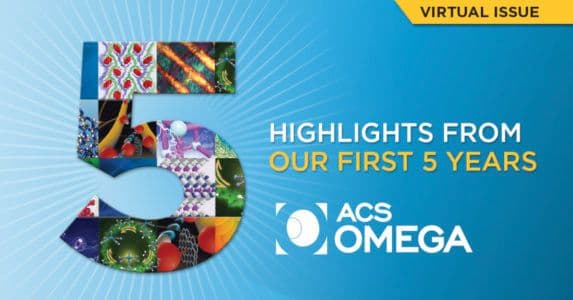
2020 marks the fifth year in which ACS Omega has published high-quality content that describes new findings in chemistry and interfacing areas of science. In this Virtual Issue, the team of Editors at ACS Omega pick 50 outstanding articles to demonstrate the quality of work published over this period. These articles are divided into five categories: highly cited; highly read; articles that have received considerable online attention; articles from some of our most prolific and prominent authors; and articles published by our own eminent Editorial Board that represent the diversity of topic and geography of the journal. Celebrate with us as we look back on these excellent primary research articles, Mini-Reviews, and Perspectives. We apologize to the many researchers whose works were worthy of selection but have not featured in this Special Issue due to number restrictions in each category. We express our gratitude to all our authors, reviewers, and readers and hope to continue to meet your needs in the future. If you haven’t already engaged with our journal, here are five reasons to publish Open Access with ACS Omega.
Paul Geerlings Festschrift
It is a pleasure and a privilege for us to serve The Journal of Physical Chemistry A as guest editors of the virtual special issue in honor of Paul Geerlings, who turned 70 in November of 2019.
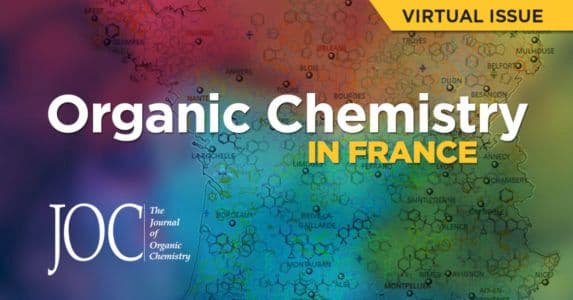
France is known generally for its complex gastronomic and cultural contributions to society, and adding to the country’s ambiance is its rich achievements in science, particularly organic chemistry. The Journal of Organic Chemistry is recognizing these strong traditions with a Virtual Issue featuring recent articles published in the journal by researchers in France.
Celebrating 65 Years of ACS PRF Grants
Since the first grants were awarded in 1954, the ACS Petroleum Research Fund has awarded over $700 million dollars in research grants to professors in academic institutions, supported fundamental research, the early careers of many professors, and assisting established researchers in taking their research scope into substantially new directions. This collection showcases a wide range of research ACS PRF awardees engage in, all published in the Journal of the American Chemical Society.
Celebrating Chemistry in Latin America
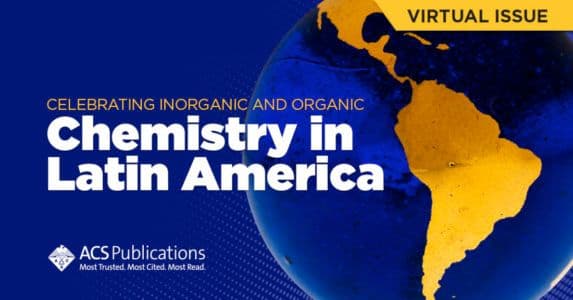
Historically, organic chemistry in Latin America has focused mostly on medicinal chemistry and natural products research, mainly because of the potential of this vast region of the world as a rich source of bioactive secondary metabolites from its diverse ecosystems. Over the past 20 years, the field here has experienced a shift toward the development of synthetic methodologies, catalysis, and theoretical approaches to study organic reactions and aid structural characterization, but still maintaining a strong presence in natural products chemistry.
2020 Inorganic Young Investigators
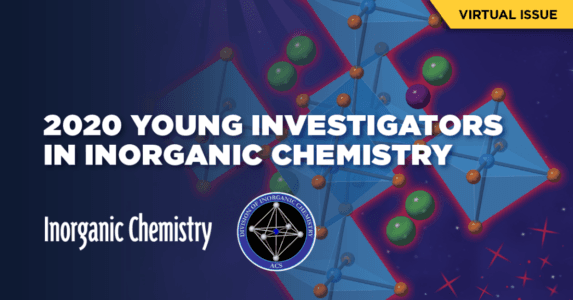
Inorganic Chemistry and the ACS Division of Inorganic Chemistry are pleased to present a Virtual Issue featuring articles authored by recipients of the Division’s 2020 Young Investigator Award. This annual award was instituted in 2005 to recognize the next-generation of inorganic chemists who are at the forefront of their respective research areas. Young Investigators selected over the years, now numbering more than 100, are enjoying diverse careers at universities, companies, and national labs around the world.
***
Structure Property Processing Relationships in Polymer Nanocomposites

The “Structure Property Processing Relationships in Polymer Nanocomposites” Virtual Issue is a joint venture by the ACS journals Macro Letters and Macromolecules in collaboration with NanoMine, an open-source data framework for polymer nanocomposites which aims to curate experimental metadata related to polymer nanocomposites with a vision for data-driven discovery and design. This Virtual Issue compiles 15 articles published in ACS Macro Letters and Macromolecules, with research data of 230 samples associated with these publications made openly available on NanoMine. This venture represents an experimental effort by journals and data repositories to encourage authors of relevant publications to archive their published data and make it readily available to researchers. Through this collaboration, we aim to promote data sharing in the scientific community and the development of innovative material characterization and analysis tools with the eventual goal of new discovery and design of polymer nanocomposites. In the accompanying Viewpoint, important aspects of data structure, tools for visualization and analysis, and challenges of curation are presented along with a few demonstrations of NanoMine’s current capabilities incorporating data from the collected articles. Guest editors Cate Brinson of Duke University and Linda Schadler of the University of Vermont invite the broader polymer nanocomposites community to explore the articles in this issue and the capabilities of curated data resources such as NanoMine to provide new avenues for ongoing research.
***
Graphene, the Swiss Army Knife of Nanomaterials Science
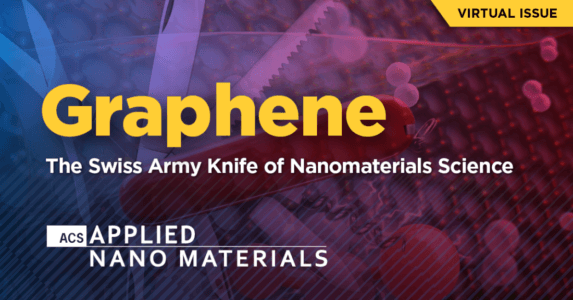
Graphene was discovered 16 years ago by Geim and Novoselov. Since then, this multifunctional material has been used in a plethora of applications across bio-medical, environmental, and energy-related domains. ACS Applied Nano Materials is now a little over two years old with roughly 200 published articles on the topic of graphene. Graphene is unique both in terms of performance and versatility. Indeed, graphene exhibits staggering electron mobility, electronic conductivity, thermal conductivity, and mechanical properties. Yet, subtle changes in its structure and its processing lead to a myriad of novel properties. In light of the recent development in this hot field, it is our pleasure to announce a “virtual issue” on graphene and graphene-based nanomaterials for ACS Applied Nano Materials.
September
The Impact of Modern Spectroscopy
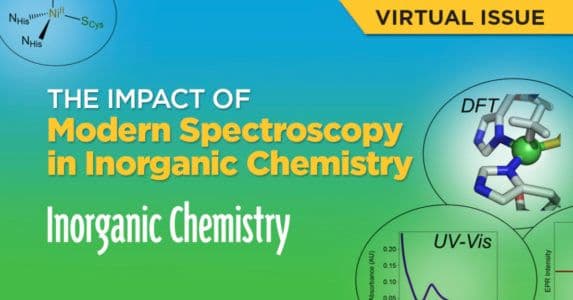
Inorganic Chemistry has a fine tradition in developing and using spectroscopic methods for characterizing compounds, in particular molecules involving d- and f-elements that give rise to multiple electronic and magnetic states. As new chemistry has developed in recent years, the chemistry community has witnessed rapid progress in both the experimental and theoretical application of spectroscopy to inorganic compounds. The Inorganic Chemistry Editorial Team thus felt it was a good time to demonstrate the power of spectroscopy to probe inorganic systems by assembling a Virtual Issue that highlights the many ways in which spectroscopy can be used in the discipline. This collection, titled “The Impact of Modern Spectroscopy in Inorganic Chemistry,” features articles published in the journal between January 2018 and July 2020, with an additional selection of articles from the Journal of the American Chemical Society.
***
Chemistry in Africa: Open & Global

ACS Omega is delighted to present this special collection of articles that highlight the substantial scientific contributions of researchers based in Africa. Our commitment has always been to serve as an inclusive, broad scope, and global open-access journal. This Virtual Issue serves as a reminder that welcoming and communicating research from Africa to the world remains an integral part of our mission.
***
Polaritons in Physical Chemistry
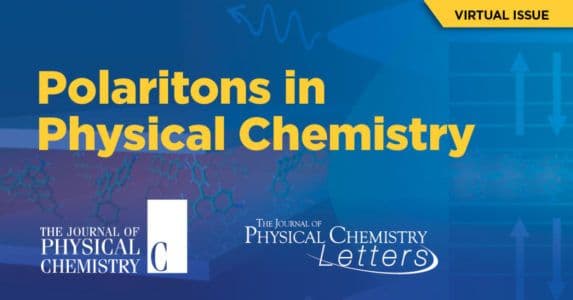
This Virtual Issue highlights recent articles in The Journal of Physical Chemistry A/B/C and The Journal of Physical Chemistry Letters that focus on polaritons – the unusual states that arise from coupling between light and the optical transitions in materials. Polaritons can be created by placing molecules or quantum dots in optical cavities, or by using the enhanced electromagnetic fields that occur at the surfaces of metal nanostructures. The collected articles describe both theory and experiments, and deal with topics ranging from the synthesis of nanostructure for strong plasmon-exciton coupling, to non-adiabatic molecular dynamics calculations of properties. We hope that this collection will stimulate interest in this exciting field!
***